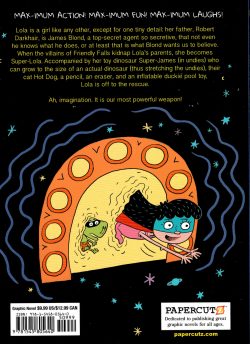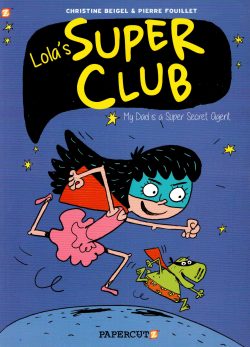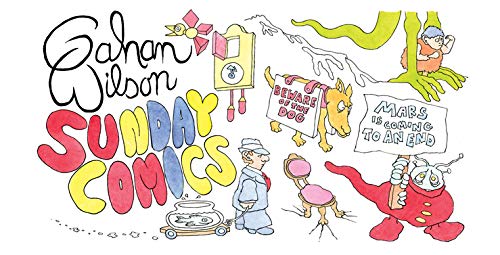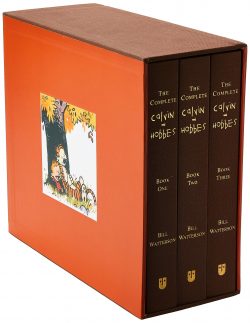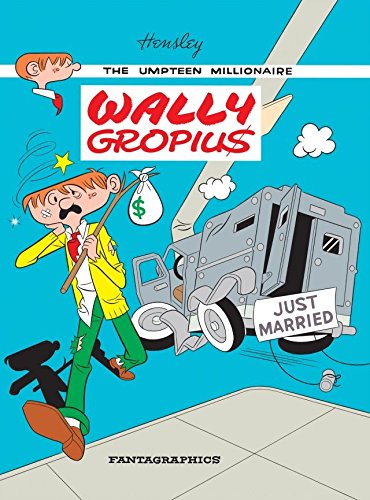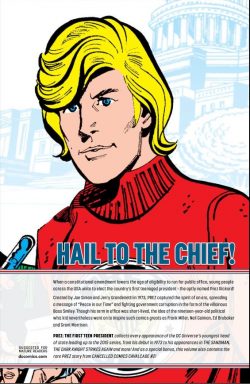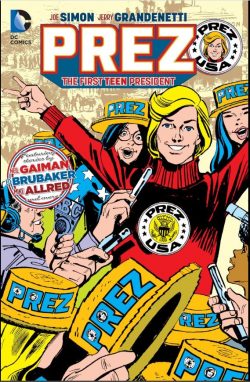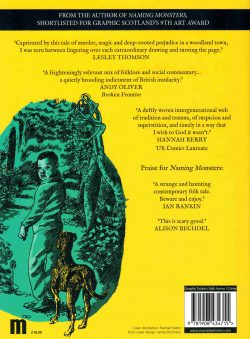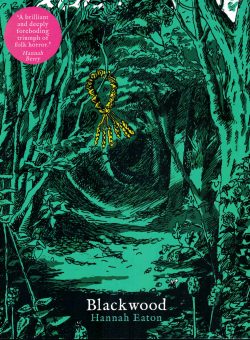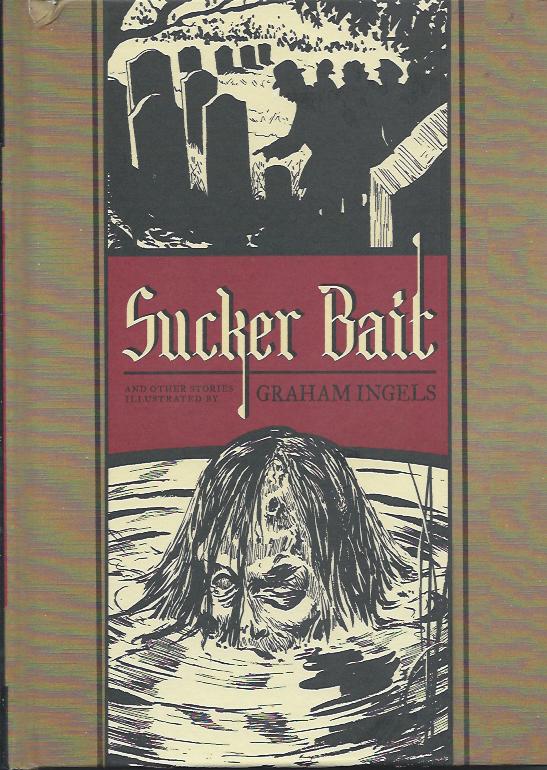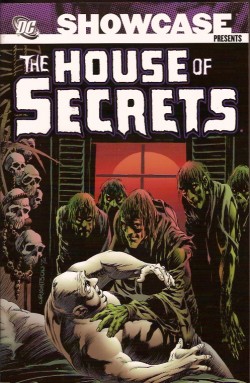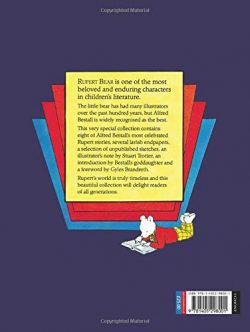
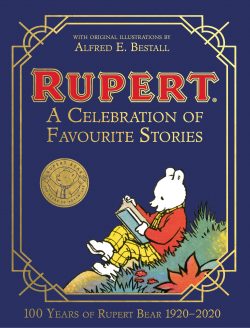
By Alfred E. Bestall & various (Egmont)
ISBN: 978-1-4052-9800-1 (HB)
Win’s Christmas Gift Recommendation: Evergreen Seasonal Tradition with Universal Appeal… 10/10
We’ve all simultaneously stared death in the face and tried to celebrate a wealth of what should have been joyous anniversaries this year. With no snarky comment or obtuse political swipe to hand, I’ve opted to review here a genuine cultural icon of our Island Nation, and one I think we can all agree we’d be happy to find overseeing our future health and wealth…
As I’ve interminably stated recently, this year celebrates many, many comics anniversaries. For Britain, the biggest of those is probably this one.
Long before television took him, hirsute national treasure Rupert Bear was part of our society’s very fabric and never more so than at Christmas when gloriously rendered and painted, comfortingly sturdy rainbow-hued Annuals found their way into innumerable stockings and the sticky hands of astounded, mesmerised children.
Our ursine über-star was created by English artist and illustrator Mary Tourtel (1874-1948) and debuted in the Daily Express on November 8th 1920; the beguiling vanguard and secret weapon of a pitched circulation battle with rival papers the Daily Mirror and Daily Mail. Both papers had cartoon characters for kiddies – Teddy Tail in the Mail and the soon-to-be legendary Pip, Squeak and Wilfred in the Mirror.
Tourtel’s daily serial of the Little Lost Bear initially ran for 36 monochrome instalments and triggered a phenomenon which remains in full force to this day, albeit largely due to the diligent efforts of her successor Alfred Edmeades Bestall, MBE (14th December 1892 – 15th January 1986), who wrote and illustrated the rapidly eponymous Rupert Bear from 1935 to 1965. Bestall was responsible for the magnificently reassuring Christmas Annuals which began with the 1936 edition, and in truth crystalised the curious little nipper’s existence into the quintessence of middle-class English pluck and gentility.
The artist who originally spearheaded the Express‘ cartoon counterattack was already an established major player on the illustration scene – and fortuitously married to the paper’s News Editor Herbert Tourtel, who had been ordered by the owners to come up with a rival feature…
The unnamed little bear was illustrated by Mary and initially co-captioned by Herbert, appearing as a pair of cartoon panels everyday day with a passage of text underneath. The bonny bruin was originally cast as a brown bear until the Express sought to cut costs and inking expenses, resulting in the iconic white pallor we all know and love today.
Soon, though, early developmental “bedding-in†was accomplished and the engaging scenario was fully entrenched in the hearts and minds of readers. Young Rupert lives with extremely understanding parents in idyllically rural Nutwood village: an enticing microcosm and exemplar of everything wonderful and utopian about British life. The place is populated by anthropomorphic animals and humans living together but also overlaps a lot of very strange and unworldly places full of mythical creatures and legendary folk. Naturally, pluck, good friends and a benevolent adult always help our hero win through no matter what uncanny situation he finds himself in…
A huge hit, Mary’s Rupert quickly expanded into a range of short illustrated novels; 46 by my count from the early 1920s to 1936, with a further run of 18 licensed and perpetually published by Woolworth’s after that.
Tourtel’s bear was very much a product of his times and social class: smart, inquisitive, adventurous, helpful yet intrinsically privileged and therefore always labouring under a veiled threat of having his cosy world and possessions taken away by the wicked and undeserving.
Heretical as it might sound, like the unexpurgated fairy tales of Hans Christian Anderson or the Brothers Grimm, Tourtel’s Rupert yarns all have a darker edge and often a worrisome undercurrent, with mysterious forces casually, even capriciously targeting our innocent star – and especially so after Herbert Tourtel died and Mary worked on alone.
This glorious tome however – reworked and skilfully re-edited to accommodate modern sensibilities – is a modified re-release of a 2007 compilation celebrating the quiet genius of Tourtel’s successor: the man most people still living think of when Rupert comes to mind…
Alfred Edmeades “Fred†Bestall, MBE, was born in Mandalay on December 14th 1892, to Methodist missionaries stationed in Burma. He and his sister were despatched back to England when he was five, ultimately rejoined by their parents in 1910. Schooled in Colwyn Bay, he won a scholarship to Birmingham Central School of Art and later attended the LCC Central School of Art and Crafts in Camden. His studies were interrupted by the Great War where he served as an army transport driver in Flanders, before concluding his courses at Camden and setting up as an illustrator.
He worked for Amalgamated Press crafting paintings and drawings for The Tatler and Punch and was hired to illustrate Enid Blyton’s books.
At the top of his game Bestall was picked to replace Tourtel on Rupert. Despite never having seen the strip and with only 5 weeks’ lead-in time, he wrote and drew his first exploit – ‘Rupert, Algy and the Smugglers’ which began on June 28th1935 while designing and filling the first Annual. For inspiration, he channelled his memories of rural North Wales and the regions around Snowdonia, while adhering to the Daily Express Children’s Editor’s sole instruction – “no evil characters, fairies or magicâ€.
Clearly, no problem…
Preceded by an Illustrator’s Note courtesy of current Rupert creator Stuart Trotter, a Foreword from profoundly English raconteur and Teddy Bear Museum curator Gyles Brandreth and effusive, intimate reminiscences in an Introduction by Bestall’s goddaughter Caroline Bott, this magical hardback tome is also graced with a gallery of lavish double-page spread Endpapers, plus a stunning selection of previously unseen pencil works and designs from Bestall’s own Sketch books, affording a fascinating glimpse at how the master worked.
The main course is eight (textually modified) classic tales in the traditional and oh-so-welcoming format – 4 illustrations per page, each accompanied by a rhyming couplet and brief passage of descriptive text.
They are cunningly interspersed with breathtaking cover images from 1944, 1969, 1963, 1949, 1956 and 1966 annuals plus a selection of puzzles Bestall crafted over the decades to create a guaranteed debilitating nostalgic wave in the old and fresh wonder in the young.
The stories themselves are presented in a random order and are terrifying in that, veteran reader though I am, I cannot detect any change or improvement in style. The writer/artist started perfect and remained that way for his entire tenure…
First here is ‘Rupert and The Tiny Flute’ from Rupert in More Adventures Annual 1944, which sees the bear stumble upon a minute musical instrument that seem to create disasters when played, leading the little chap into contention with the Imps of Spring as they seek to trigger the long-delayed Spring and facilitate a new growing season…
Following a stunning endpaper spread (‘Autumn Elf and the Imps in the Pine Trees’ from 1957’s inside front covers), Rupert Annual 1969 offers ‘Rupert and Raggety’ wherein a tremendous storm buffets Nutwood village, toppling a mighty tree and displacing a rather unpleasant troll made of roots. The surly tyke is most unpleasant to all, until Rupert finds him a new home…
Serene endpapers painting ‘Little Chinese Islands’ precedes observational puzzle ‘Rupert and the Bs’ and ‘Rupert and the Mare’s Nest’ (both from More Rupert Adventures Annual 1952) as the word-loving little bear hunts a hoary old metaphor and is fantastically introduced to the hidden realm of Earth’s feathered folk and their incredible monarch. Appropriately, the originating Annual’s Endpaper image ‘King of Birds’ beguilingly follows…
Maze puzzle ‘Rupert’s Short Cut’ (Rupert in More Adventures Annual 1944) leads into ‘Rupert and the Lost Cuckoo’from 1963’s edition, wherein strange events lead to all Nutwood’s artificial birds vanishing – everything from the Squire’s weathercock to the little wooden token in Mummy Bear’s cuckoo clock. Dedicated detective Rupert is soon on the trail and uncovers the incredible cause and solution in double-quick time…
Aquatic Elves in ‘Hovercraft’ culled from the 1968 Endpapers lead into a rather dramatic escapade as the bear and his pal Sailor Sam save a baby elephant from a flash flood in ‘Rupert’s Rainy Adventure’ (Rupert in More Adventures Annual 1944), after which Santa Clause and his trusty operative the Toy Scout seek to acquire the bear’s latest bugbear: a homemade soft toy accidentally filled with magic stuffing, originally seen in the 1949 book as ‘Rupert and Ninky’…
Moodily magnificent endpaper image ‘The Frog Chorus’ (1958) is followed by seasonal treat ‘Rupert’s Christmas Tree’(More Adventures of Rupert Annual 1947) in which the bear’s quest for the perfect yule adornment leads to uncanny events, a hidden forest and far more than he bargained for…
Bringing the joy and wonder to a close, observational brainteaser ‘Tigerlily’s Party’ from Rupert in More Adventures Annual 1944 leads to ‘Rupert and Jack Frost’ from The Rupert Book Annual 1948, with a reunion of the bear and the ice sprite, leading to a parade of flying Snowmen, a trip to the Frozen Kingdom and a singular award for the brave little wanderer…
Beautifully realised, superbly engaging fantasies such as these are never out of style and this fabulous tome should be yours, if only as means of introducing the next generation to a truly perfect world of wonder and imagination.
Rupert Bear ™ & © Express Newspapers and DreamWorks Distribution Limited. All rights reserved.

